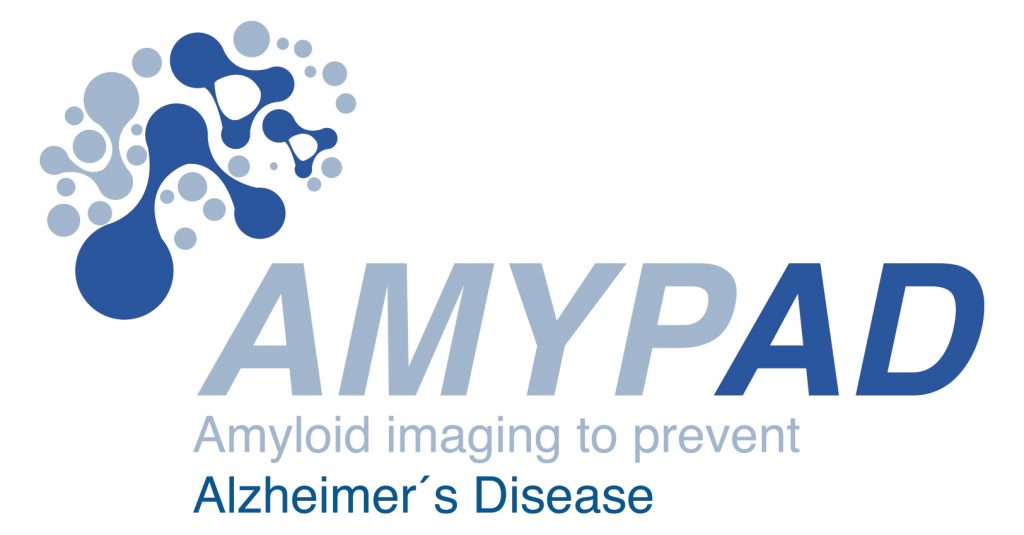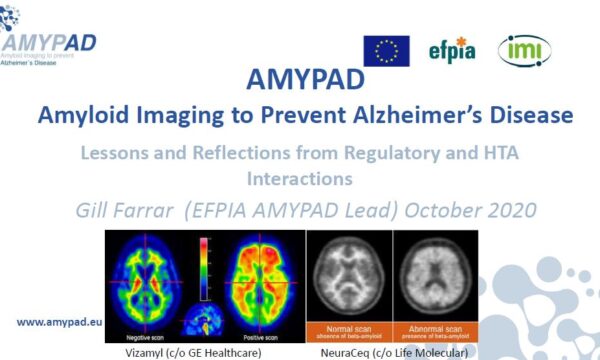As the deposition of beta-amyloid (ß-amyloid) plaques is a necessary but not sufficient step on the path towards the development of Alzheimer’s disease (AD), identifying populations at risk of developing AD goes beyond a simple detection of ß-amyloid in the brain. Additional risk factors play a role, and an overall view on amyloid status might not be sensitive enough to detect early changes or specific enough to distinguish those who might decline faster and therefore require prompt intervention. A related concern is the ability of Positron Emission Tomography (PET) imaging of b-amyloid to measure small changes in amyloid load, relevant in populations at the early stages of AD and who are the current focus of preventive trials. As a result, two questions come to mind: 1) how can we make better use of PET to understand distinct risk profiles 2) improve our ability to detect treatment effects in early-stage populations with sufficient sensitivity?
To answer these questions, a specific team was established under work-package 5 (WP5) of AMYPAD. Their goal is to focus on longitudinal modeling of disease progression and evolution of brain amyloid pathology to help in the planning and monitoring of treatment. More specifically, WP5 is set out to improve the understanding of the relationship of brain amyloid burden to disease progression and establish relevant pre-trial information that can facilitate trial inclusion, reduce required sample size and improve statistical power of the imaging-related outcomes. For that purpose, AMYPAD will be collecting data on amyloid status over time, which will help understand the changes in amyloid deposition across the brain, as well as the speed with which these changes take place. In addition, the collaboration with the EPAD disease modeling team will help put this information in the context of many other characteristics collected under that study, resulting in a rich dataset from which to study different risk profiles in a population. Although WP5’s activities will be carried out on data from AMYPAD participants, it will be essential that our future findings translate to the general community and are applicable to other clinical studies and trials. Moreover, the type of information required to answer our questions are being collected already in a number of research studies across the globe. Therefore, WP5 has an additional goal: to establish the largest set of longitudinal data on amyloid deposition and trajectories of AD development.
Over the past months, WP5 has been in contact with several research groups in order to establish collaborations and has successfully met with a number of groups who are willing to share their data with AMYPAD and help in our efforts. The idea is that by collecting such a large and heterogeneous dataset, we will be able to study the natural changes in amyloid deposition at several stages of AD, in different population sub-groups and using different radiotracers, quantitative outcomes and/or PET scanners. As a result, we will understand the power necessary to detect both natural changes and treatment-induced effects on amyloid load. Then, at a later stage, AMYPAD will build models of preclinical/prodromal stages of AD using its own datasets with an emphasis on subjects around or below the current cut-off for amyloid abnormality (called a “grey zone”), who would be the best candidates for future interventions. We will also examine when and where amyloid accumulation occurs in the brain, and how this is impacted by technical factors (quantitative outcome and radiotracer used) and biological factors (demographic, genetic and lifestyle risk factors, vascular burden, etc). In combination with the external datasets gathered in collaboration with other research groups, all of AMYPAD’s findings can be directly tested and validated in additional populations, strengthening the applicability of any developed model. As a consequence, AMYPAD will be able to refine the current cut-offs for abnormality with greater certainty. This, in turn, will improve the identification of subjects at risk at an earlier stage and allow the construction of subject-specific risk profiles, paving the way for the development of a personalized medicine approach.
While we prepare for the diagnostic and prognostic studies of AMYPAD to begin, WP5 is at a very exciting stage. Some datasets are already accessible to the team and begin to be processed, while other are being transferred to the Consortium in the near future. This large-scale collaborative platform for sharing amyloid PET data is unprecedented and brings great potential. As a consequence, we believe that WP5 will be able to make substantial contributions to the research community over the next months, which in turn will help improve the decisions and analyses to be undertaken in AMYPAD. We are very grateful to see this strong sense of community in Alzheimer’s research and are thankful to the data donors who have contributed so far.
We look forward to the busy weeks ahead and hope to share some insights with all of you soon – stay tuned!
Isadora L. Alves, PhD
on behalf of AMYPAD WP5 team



